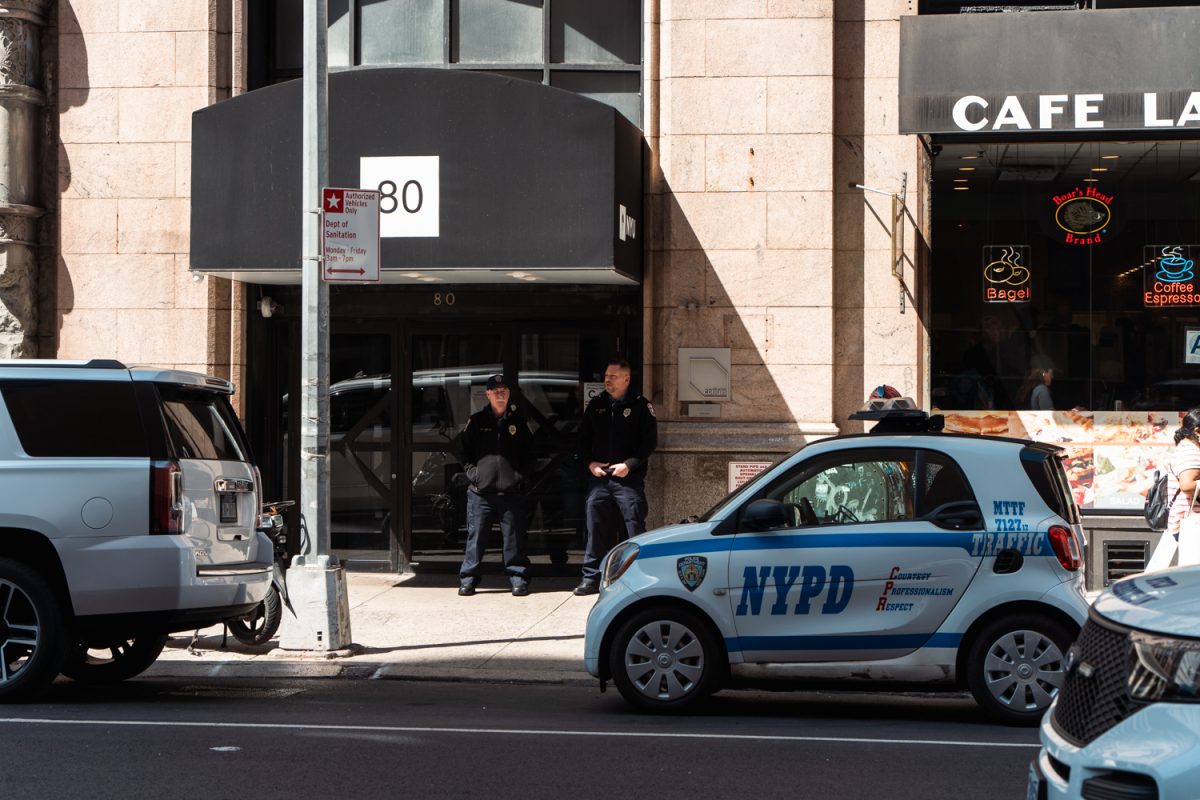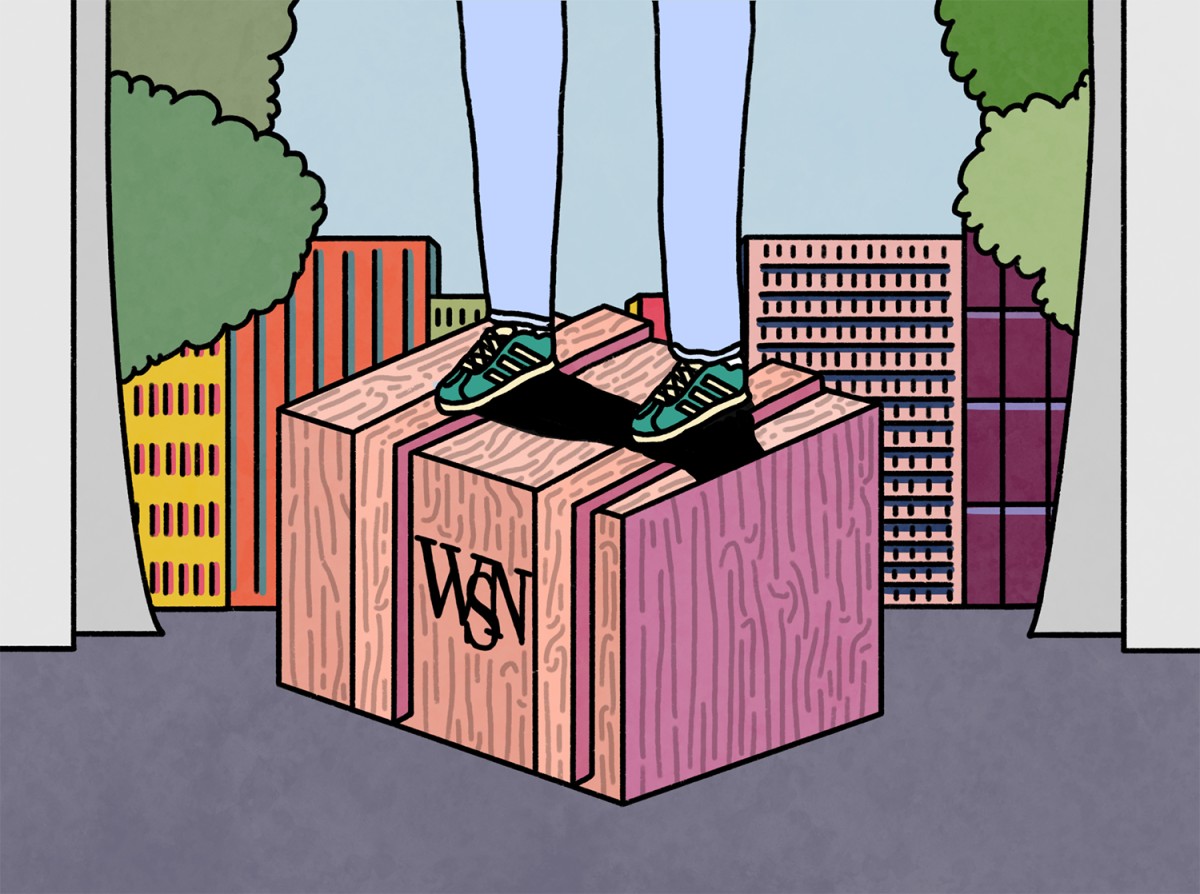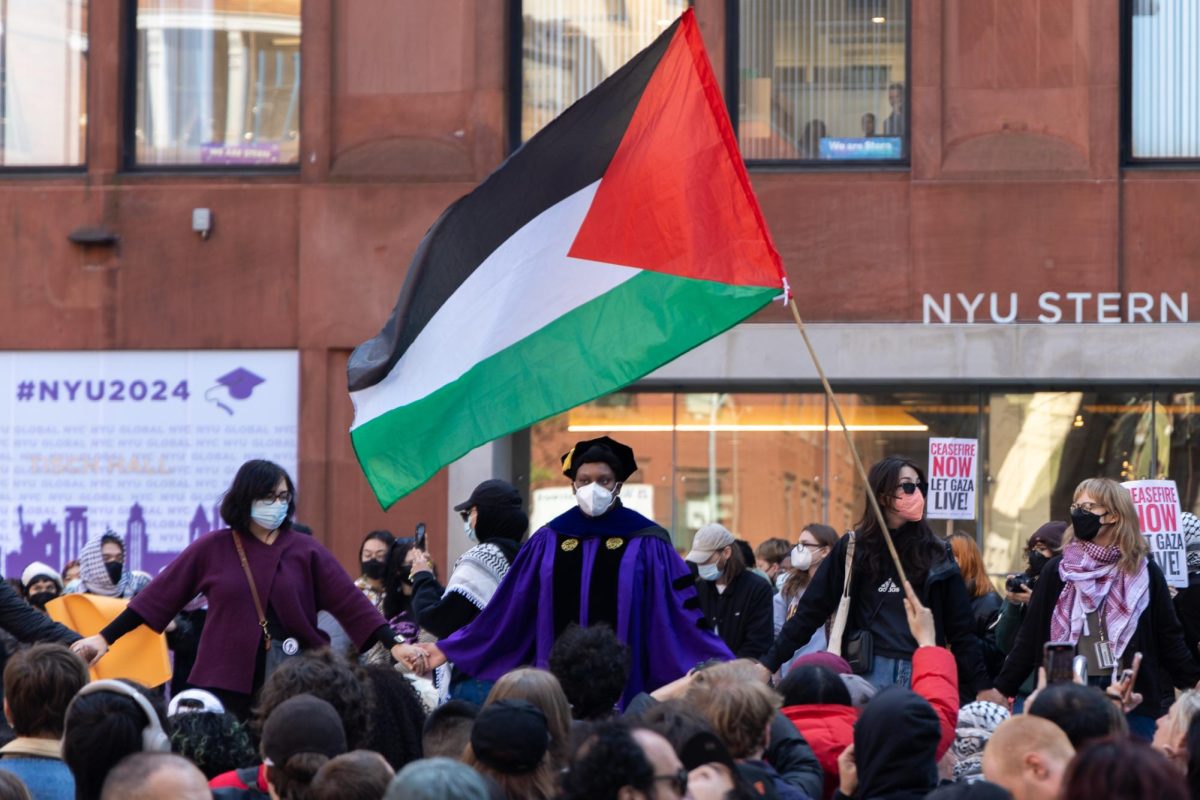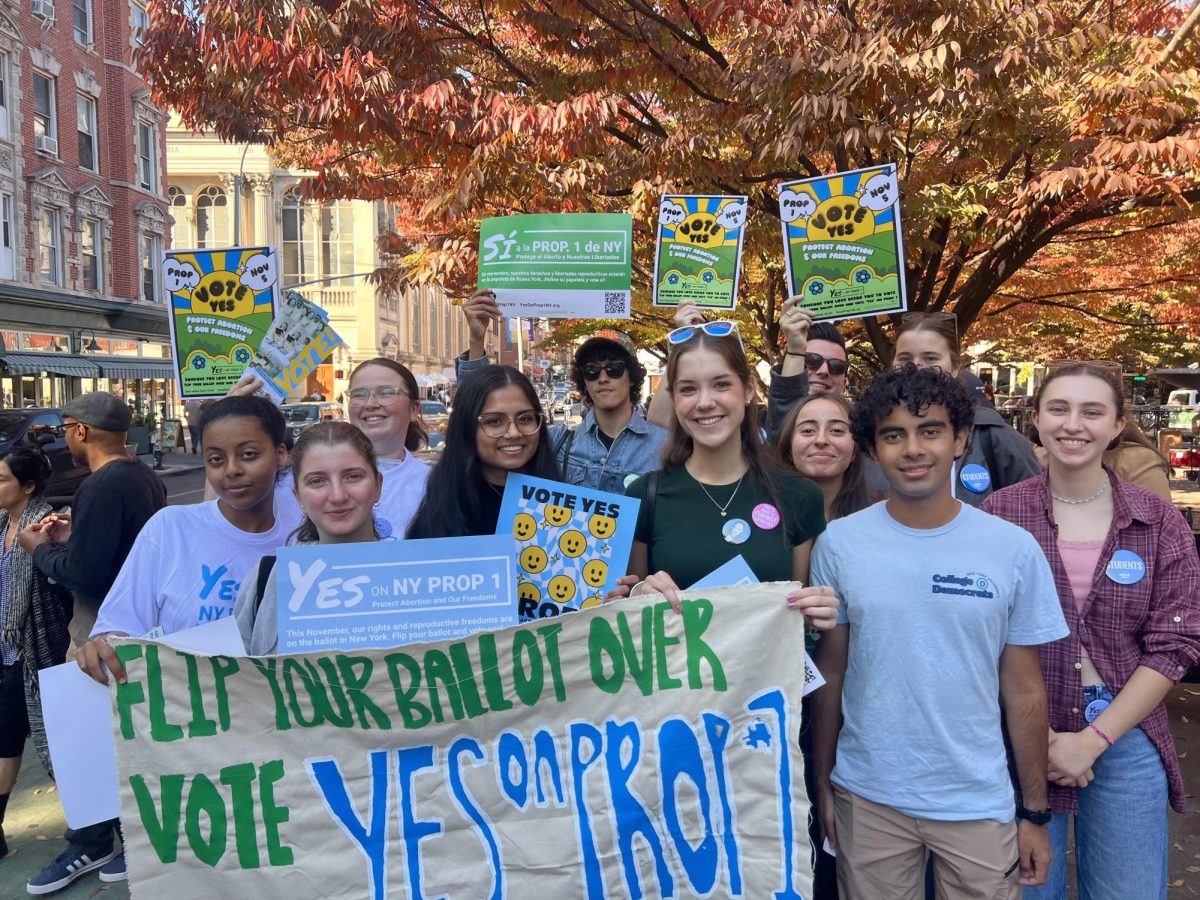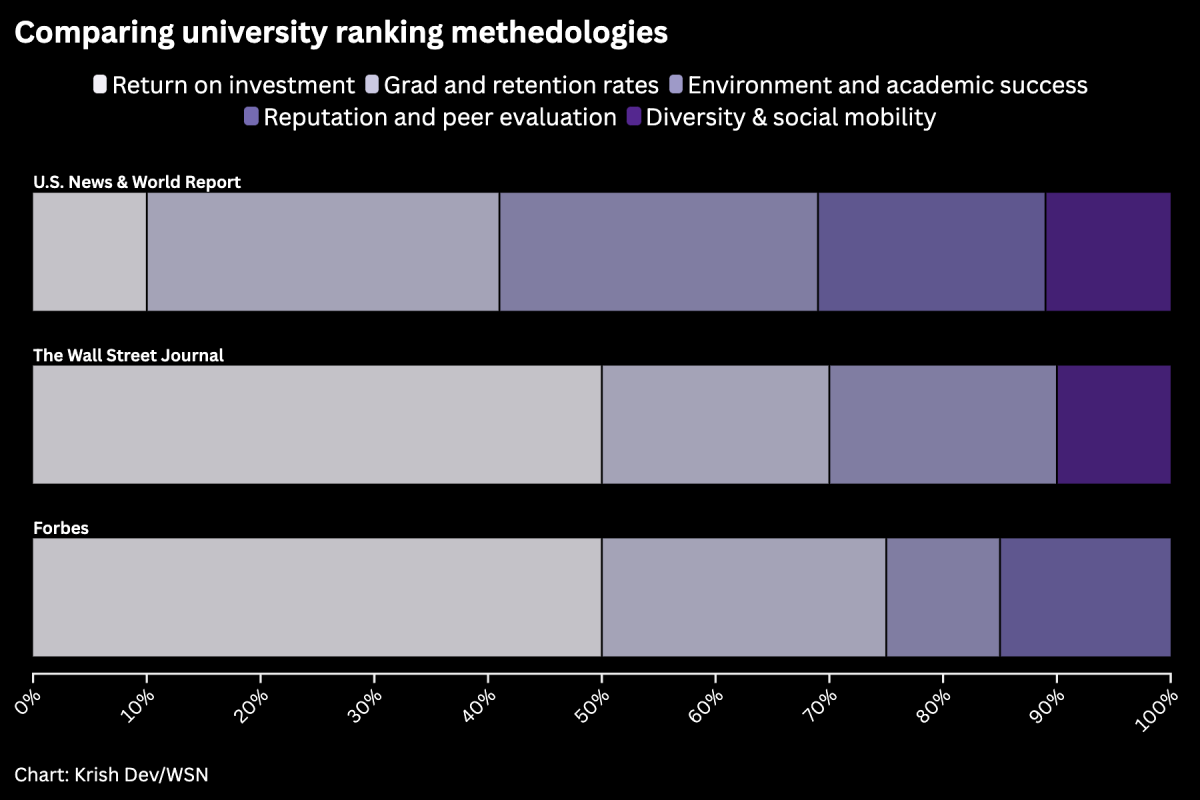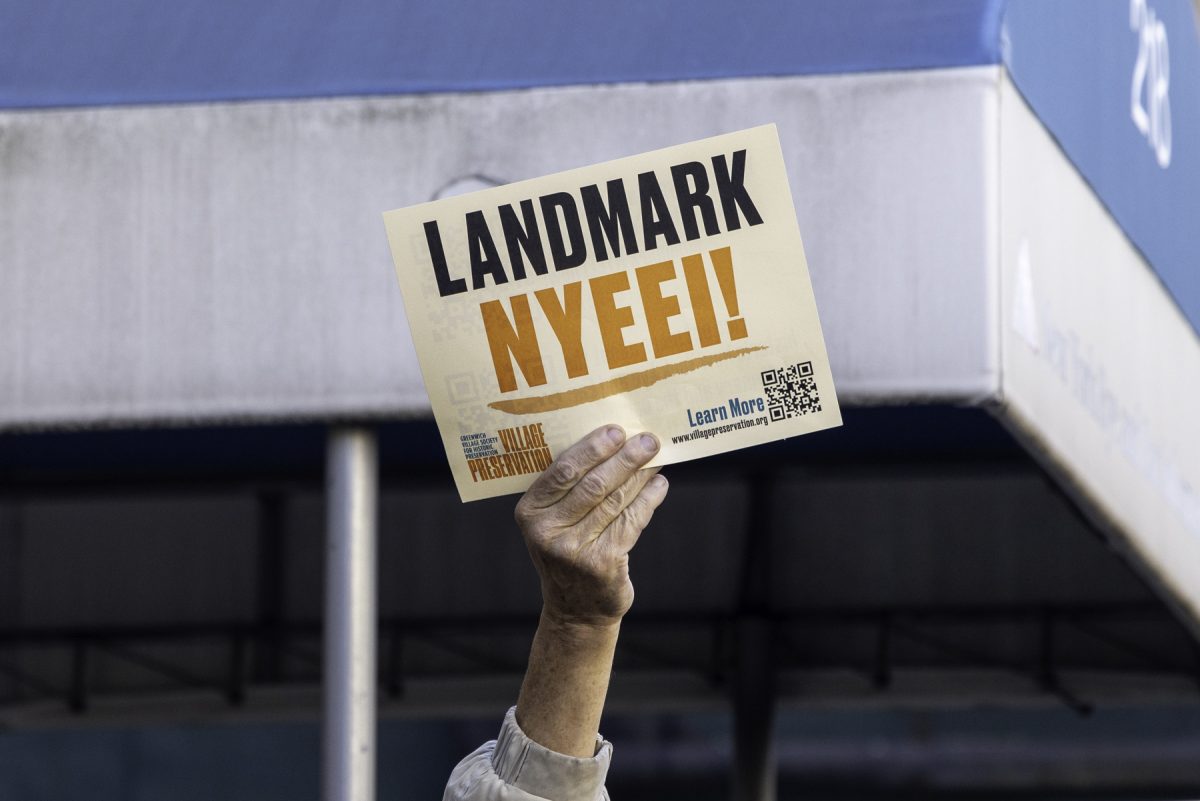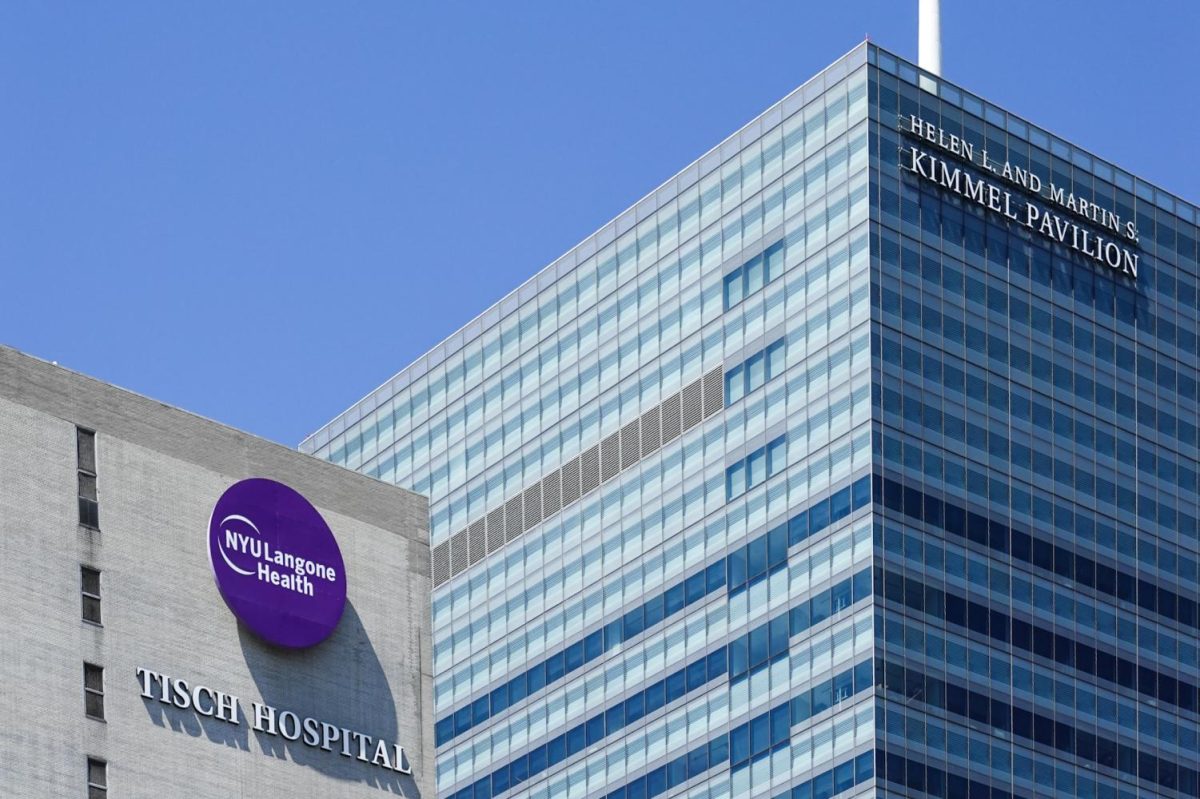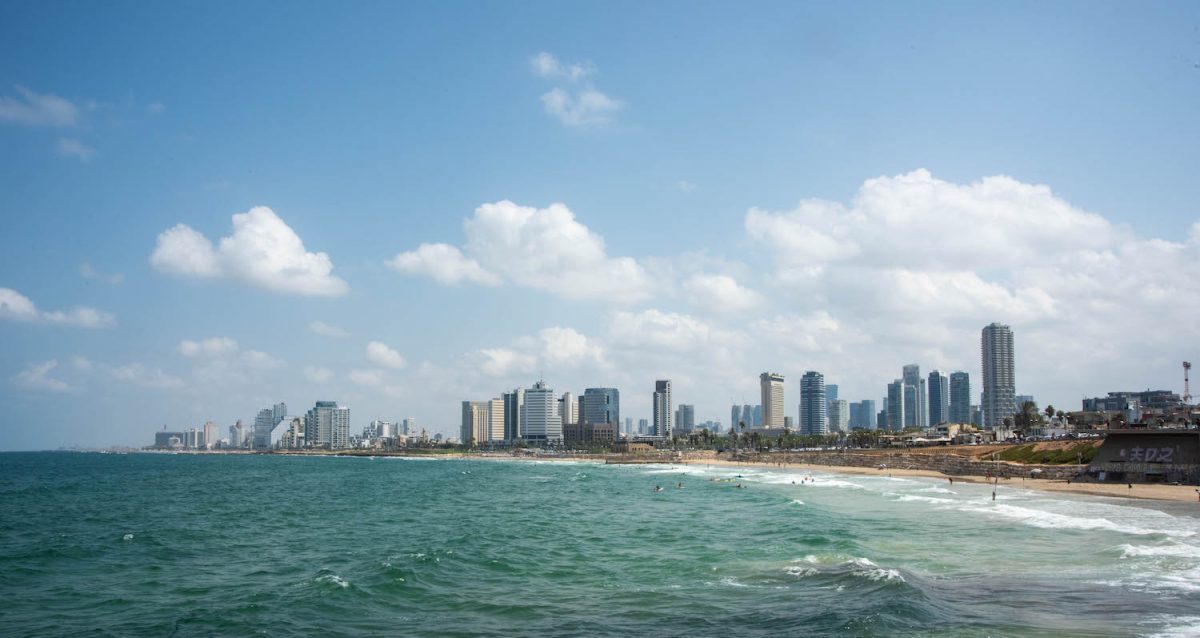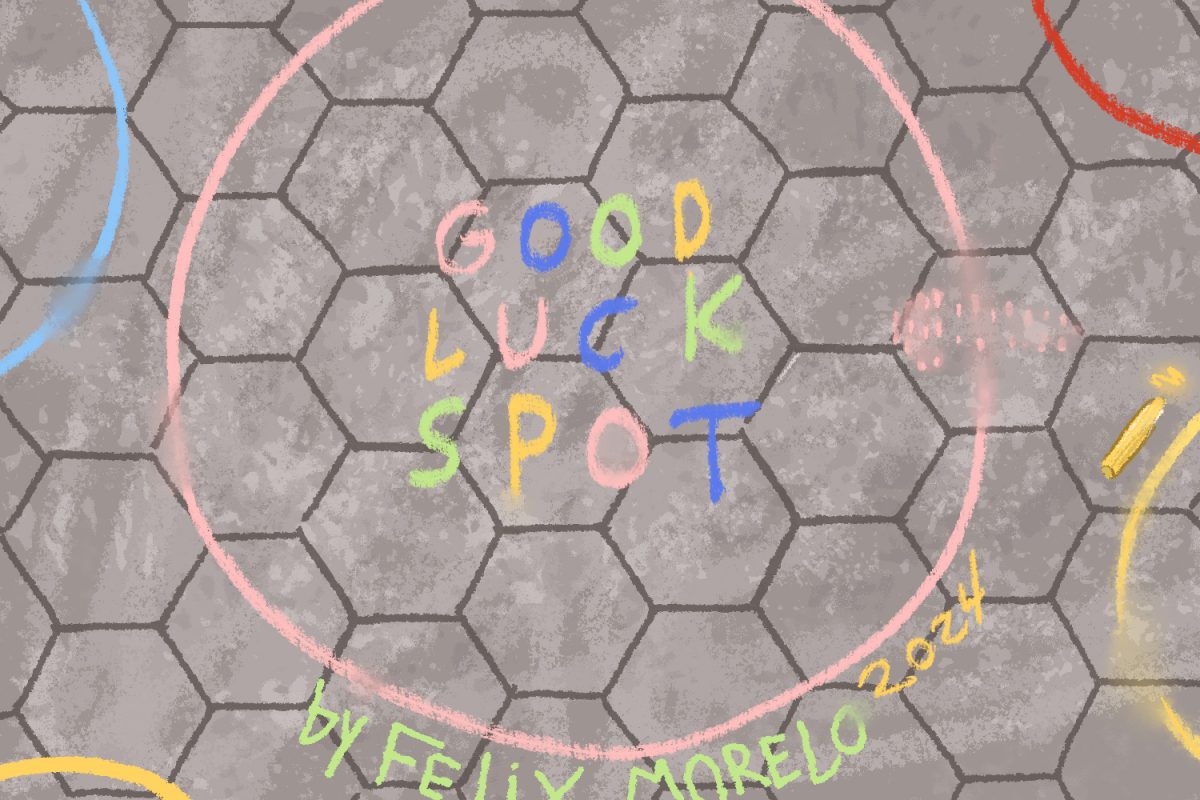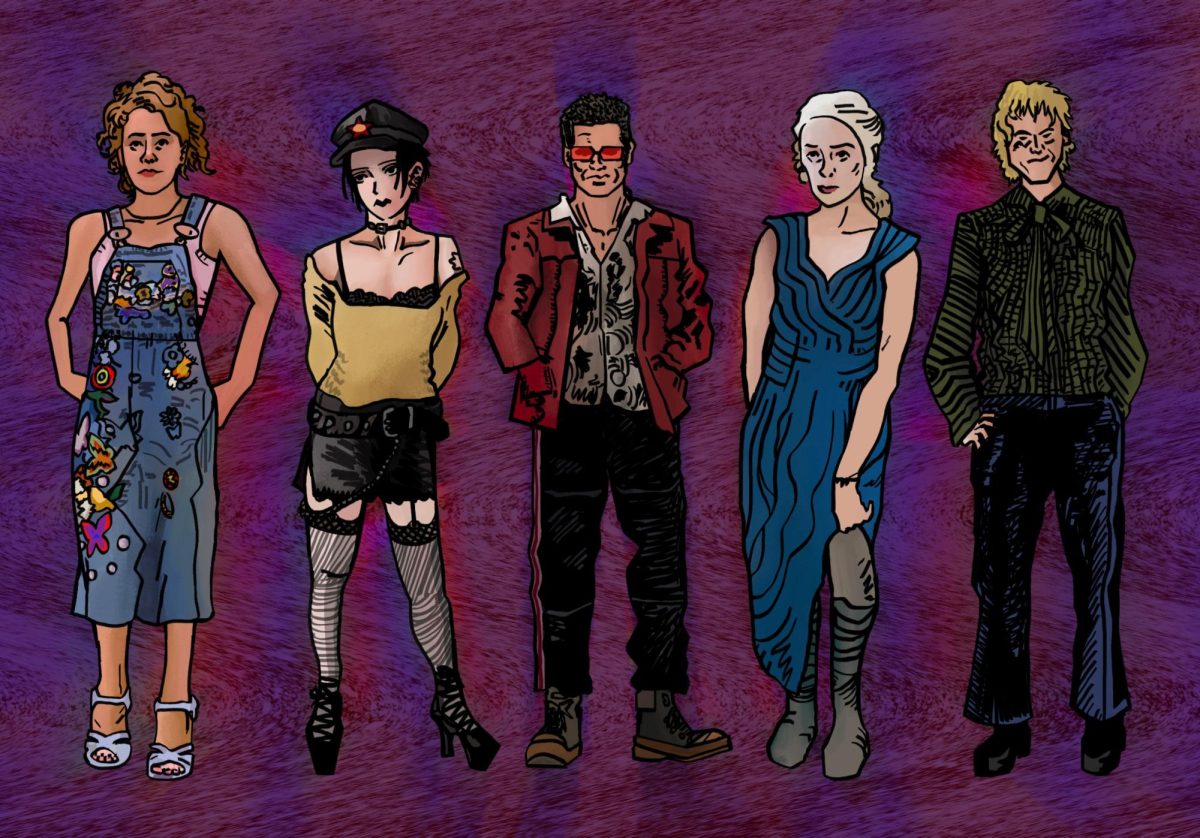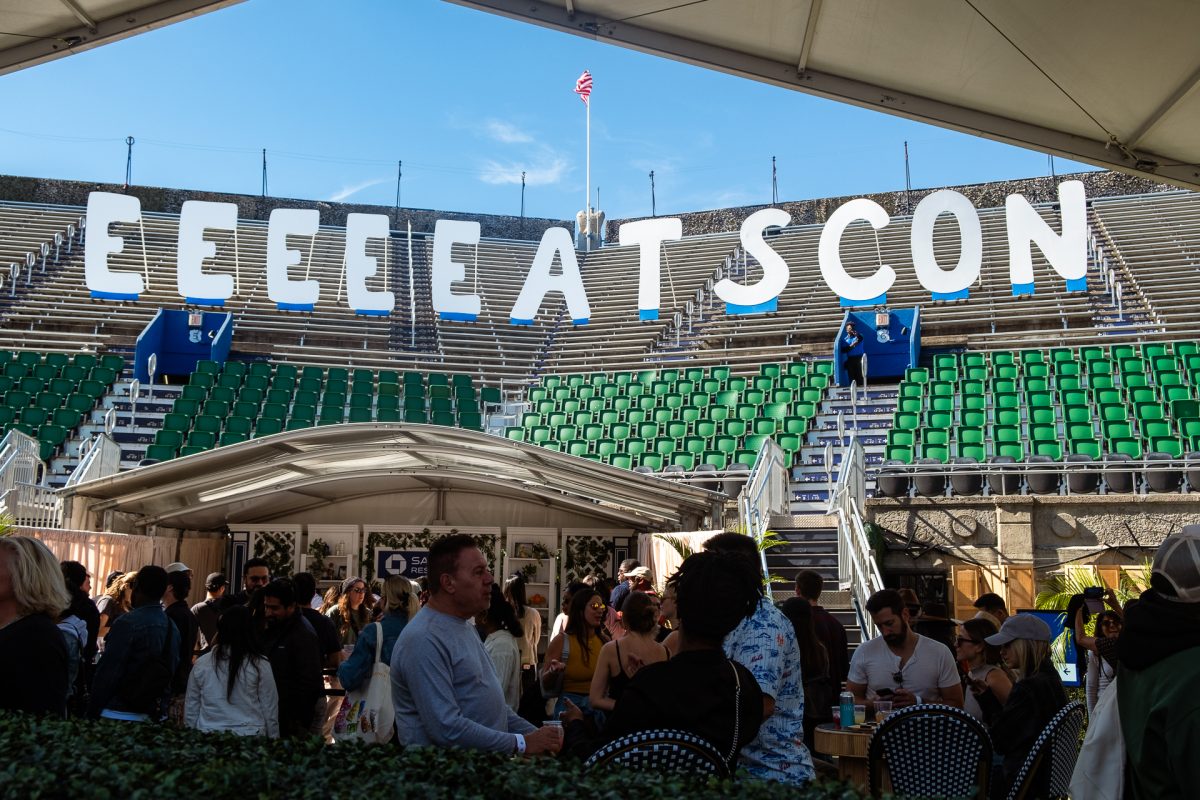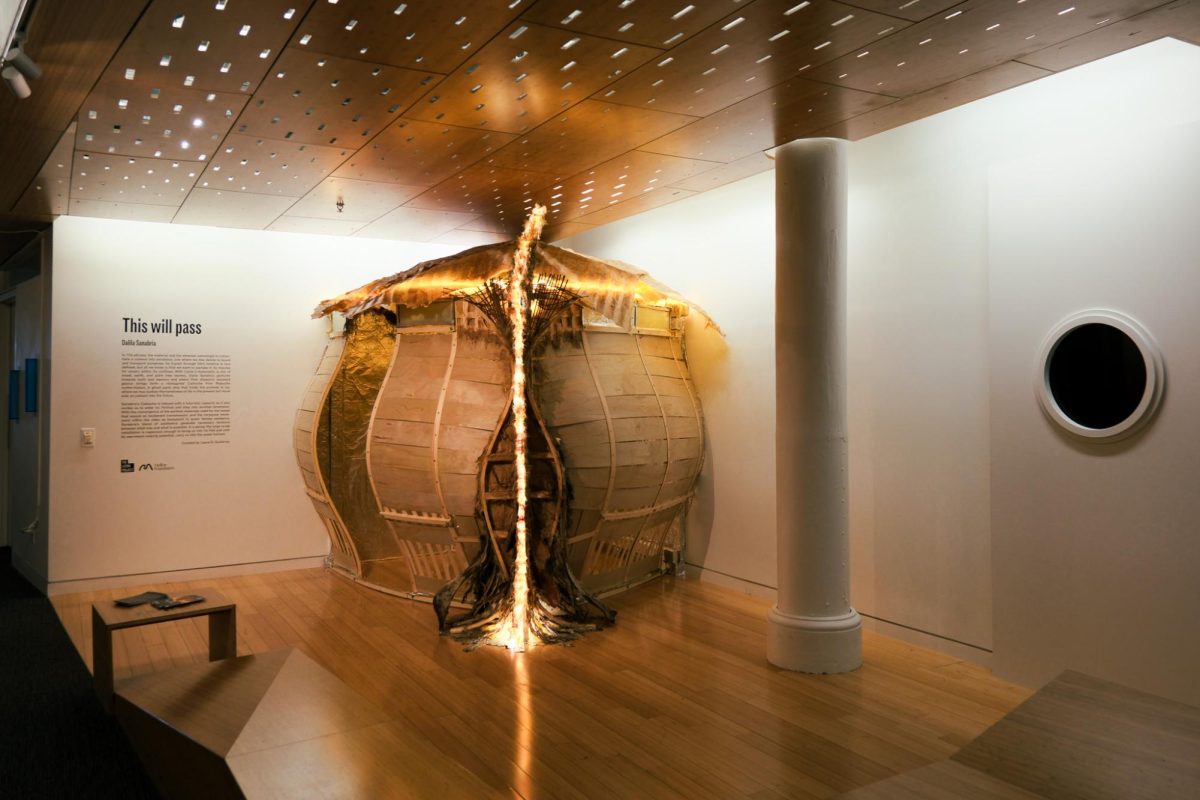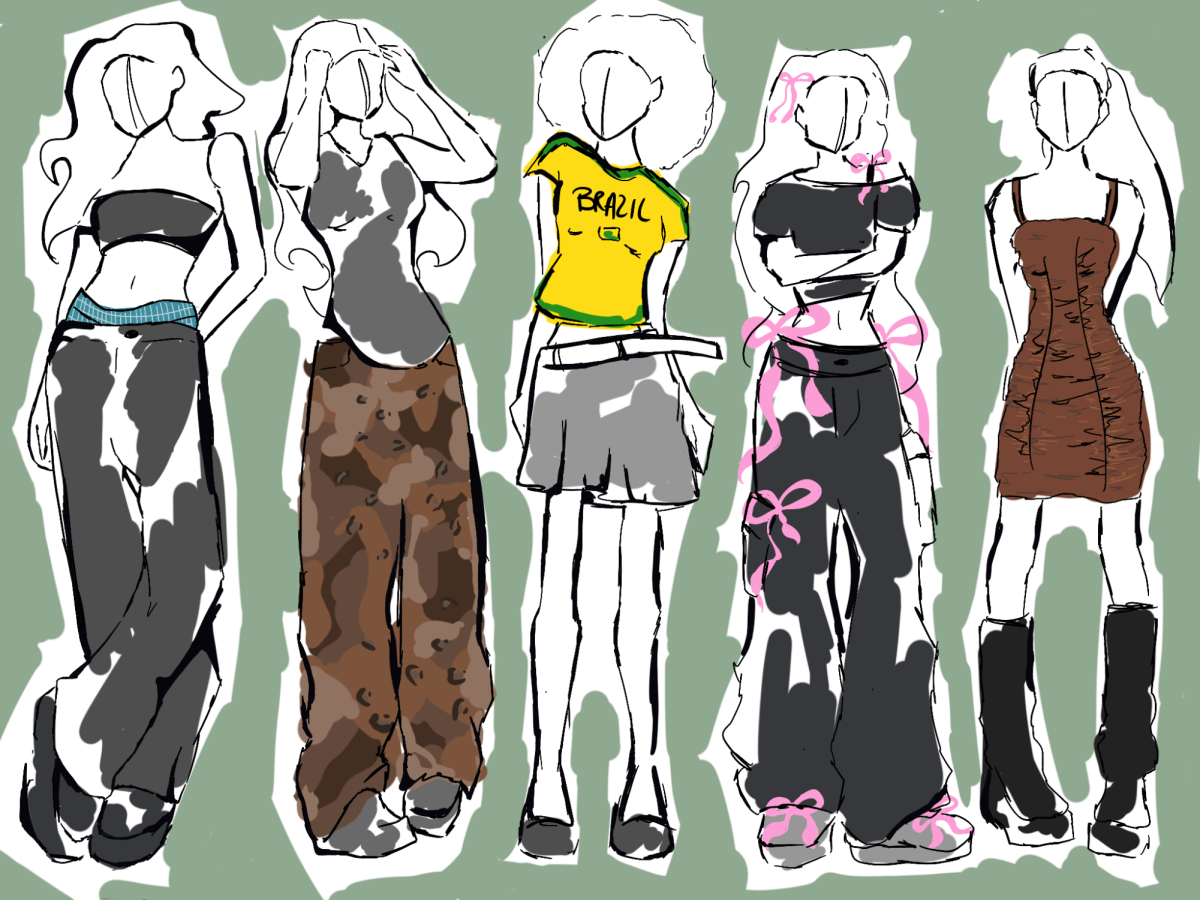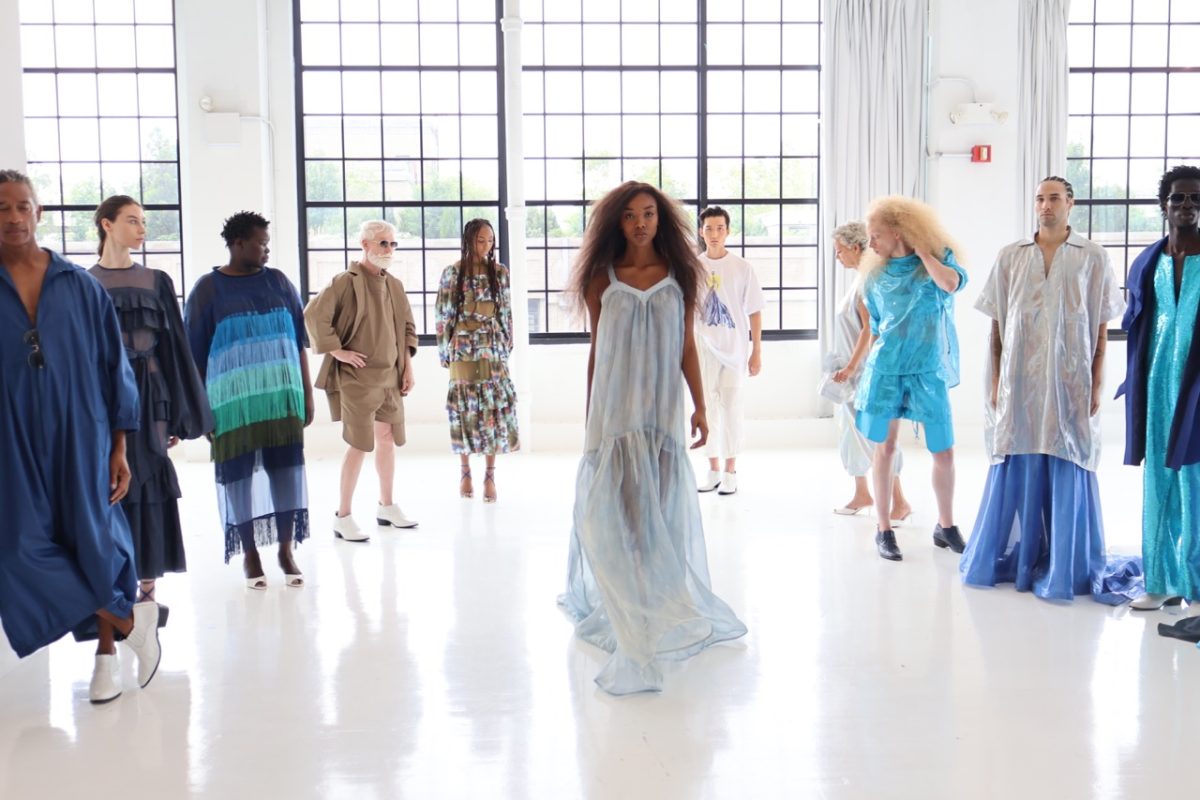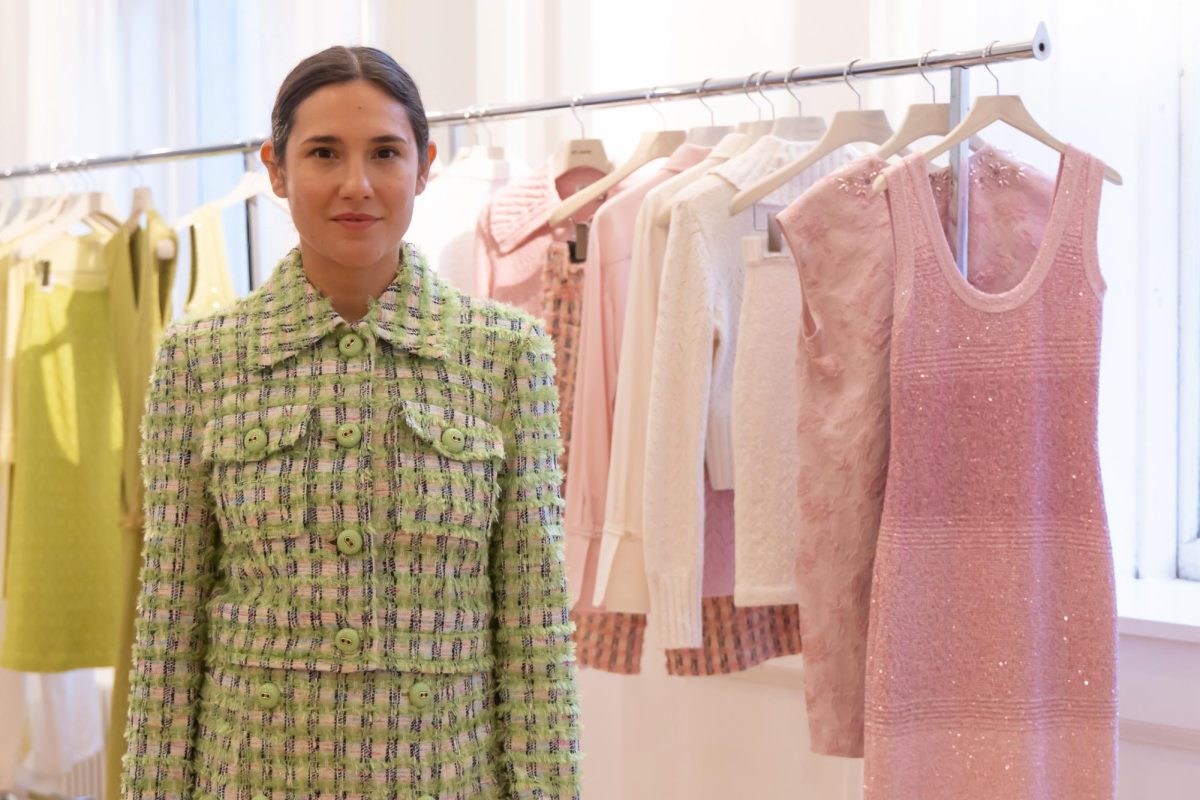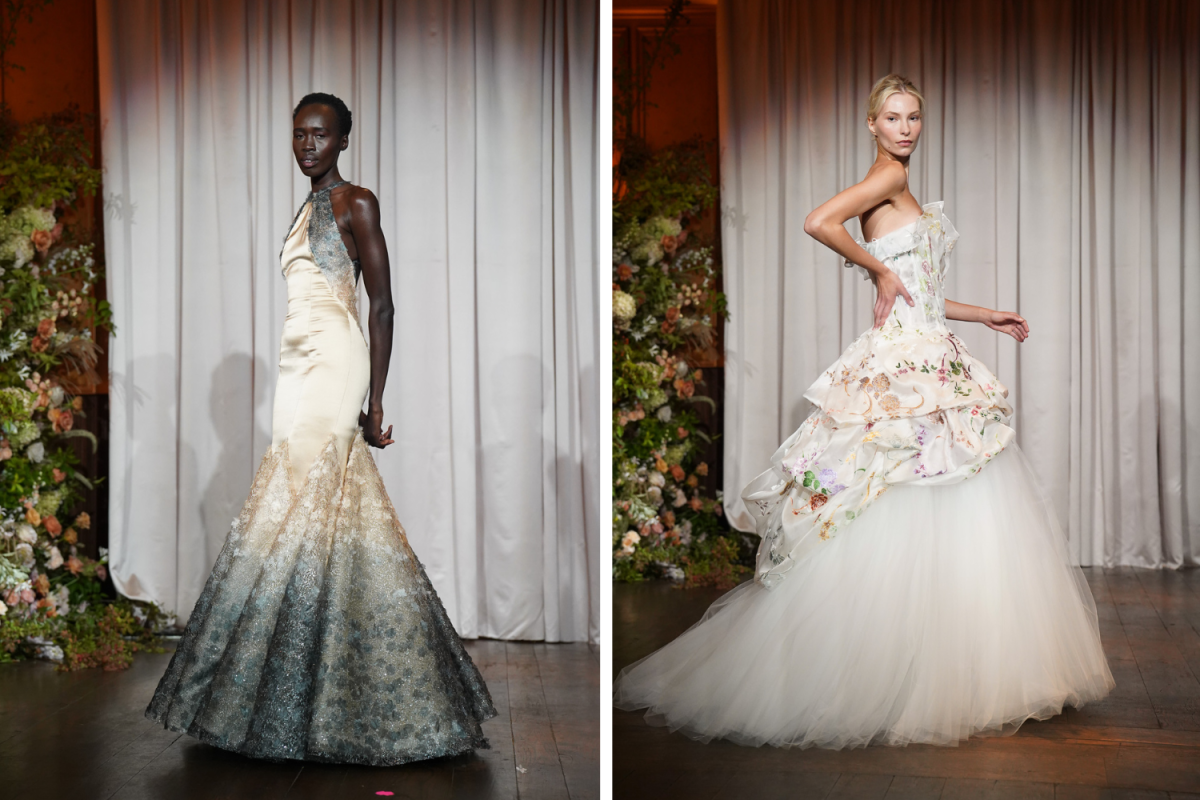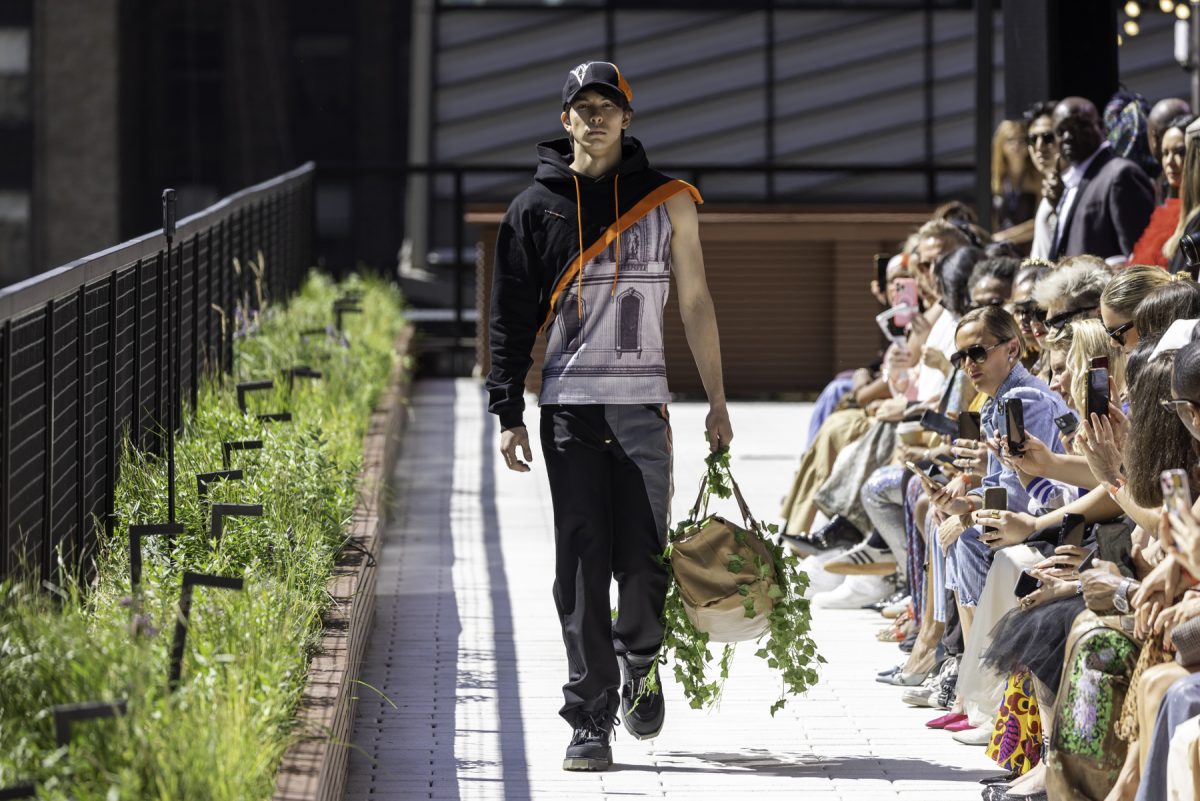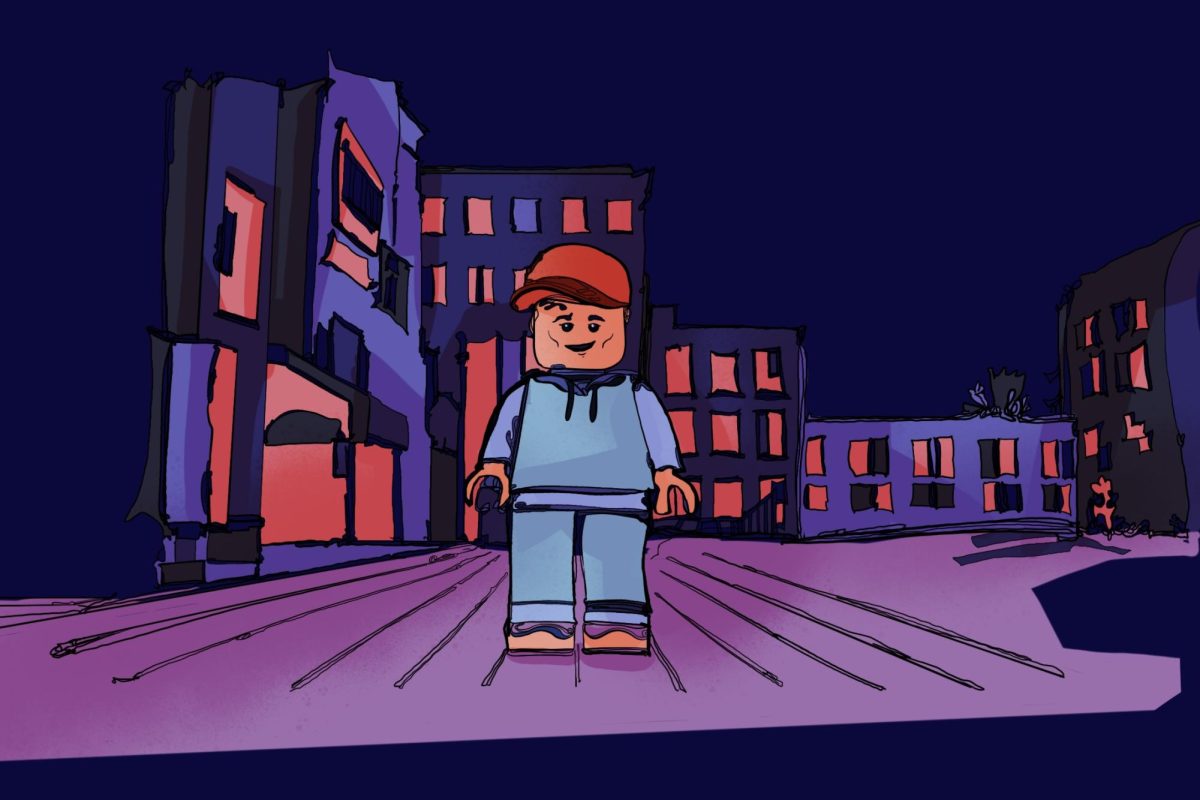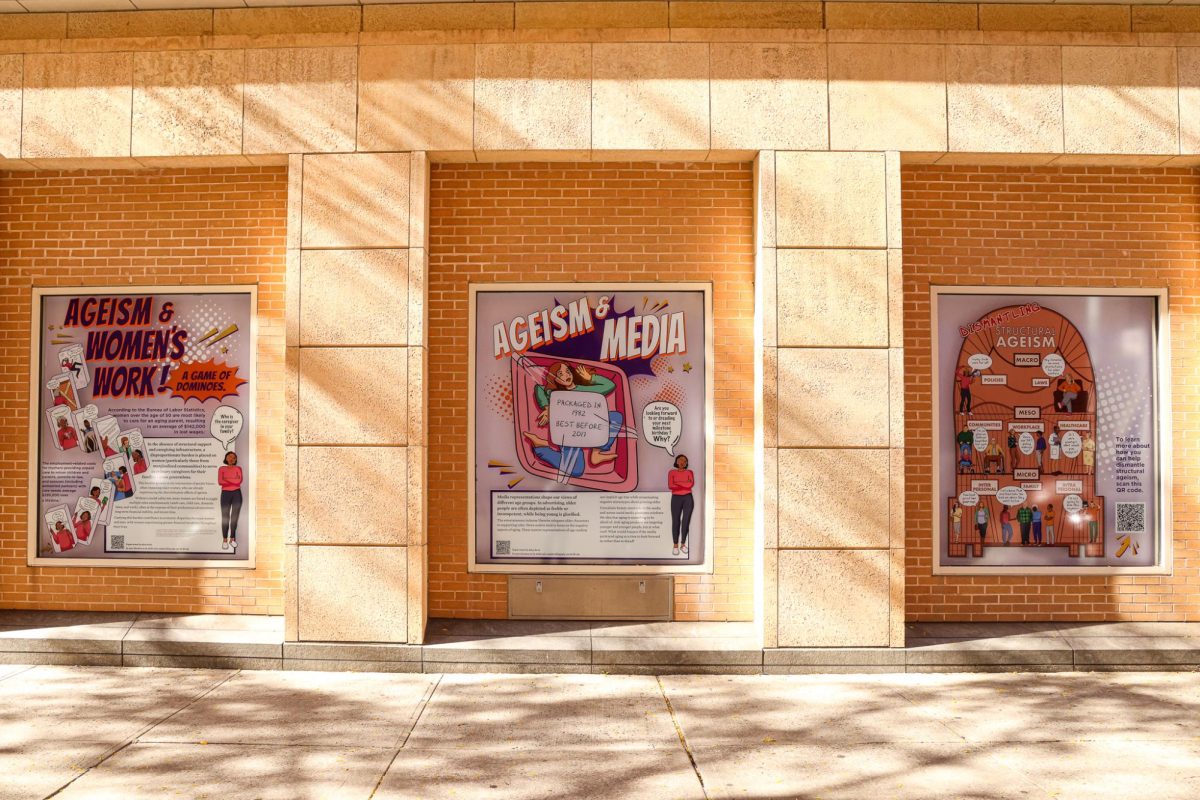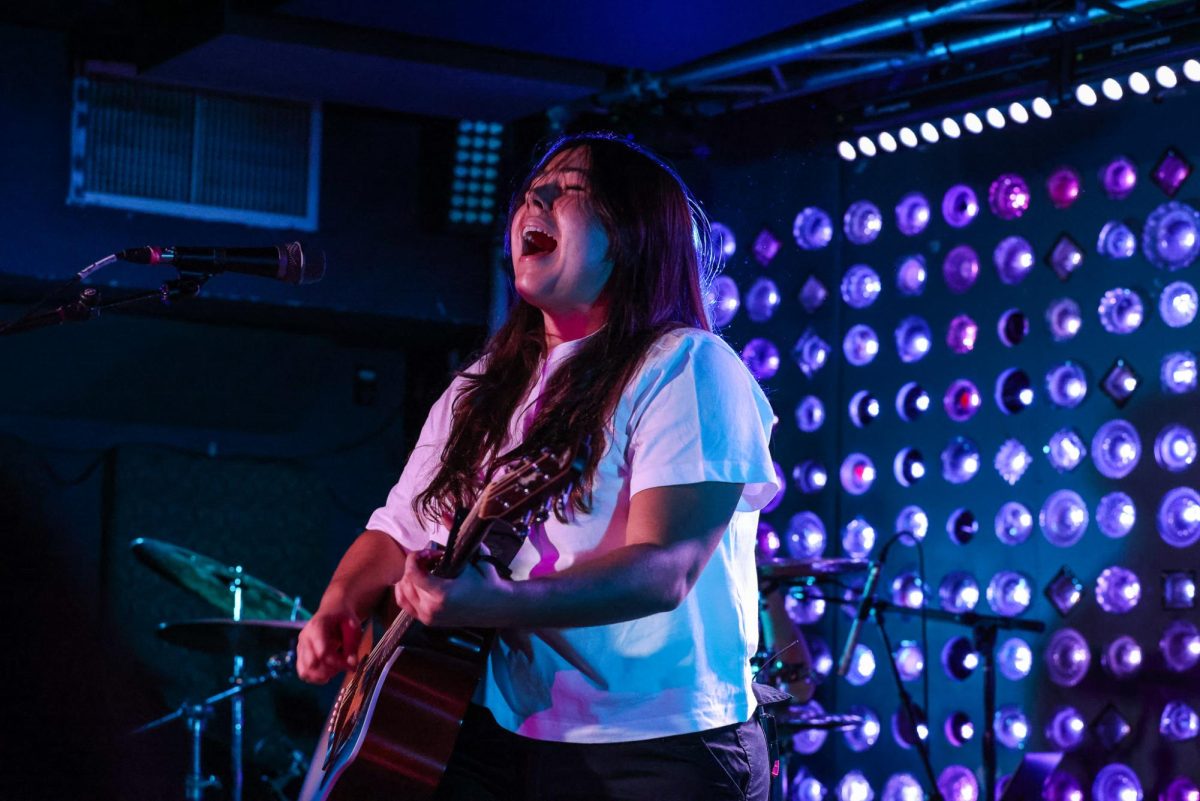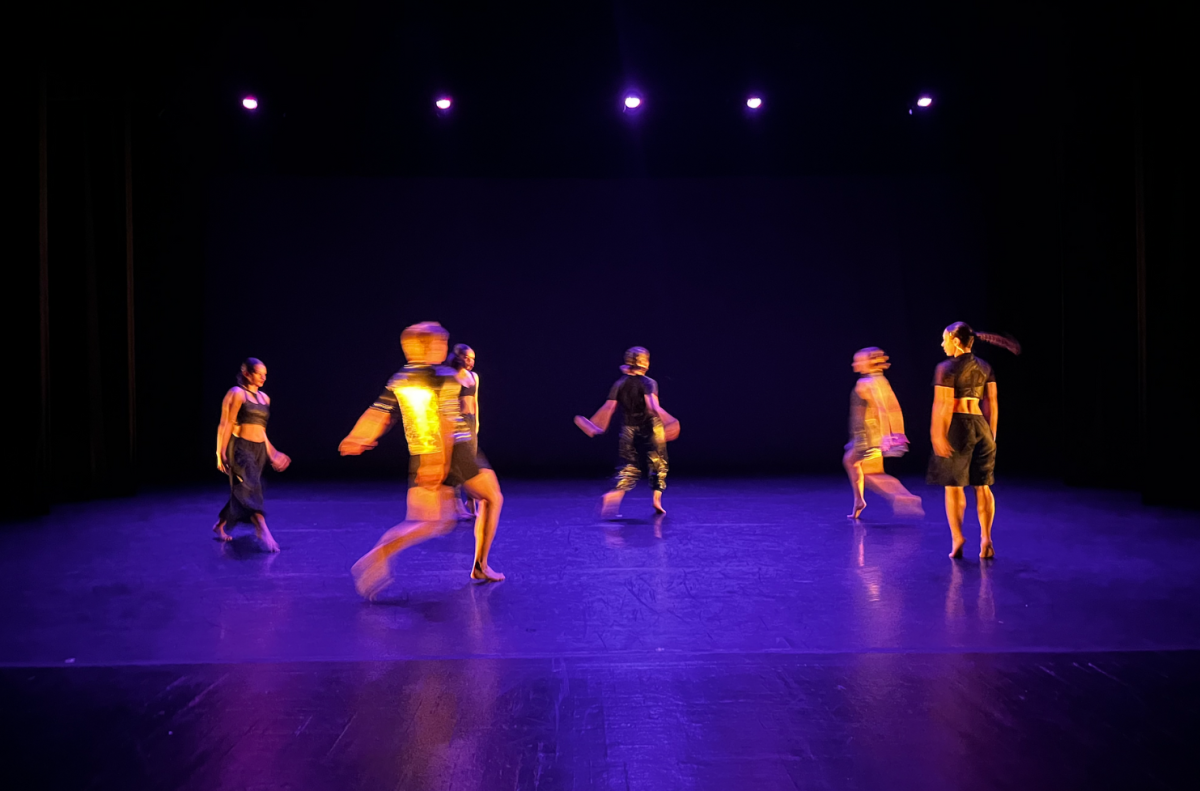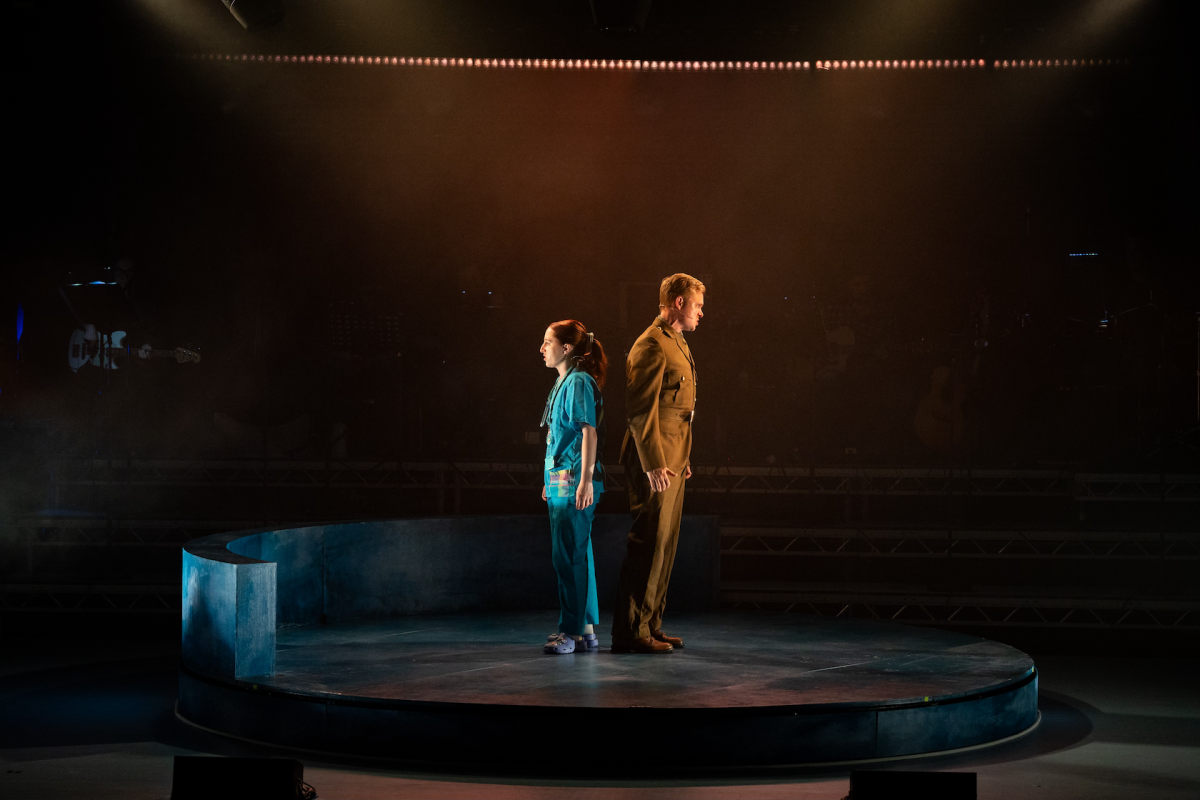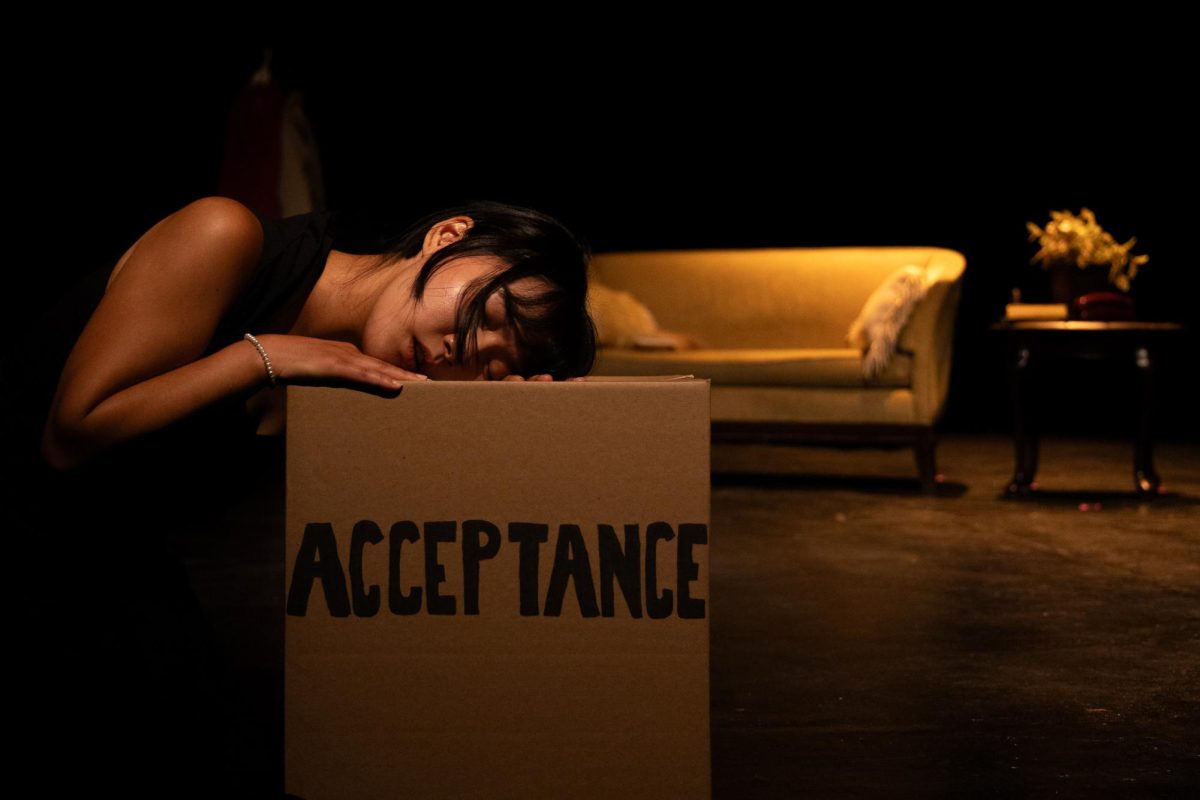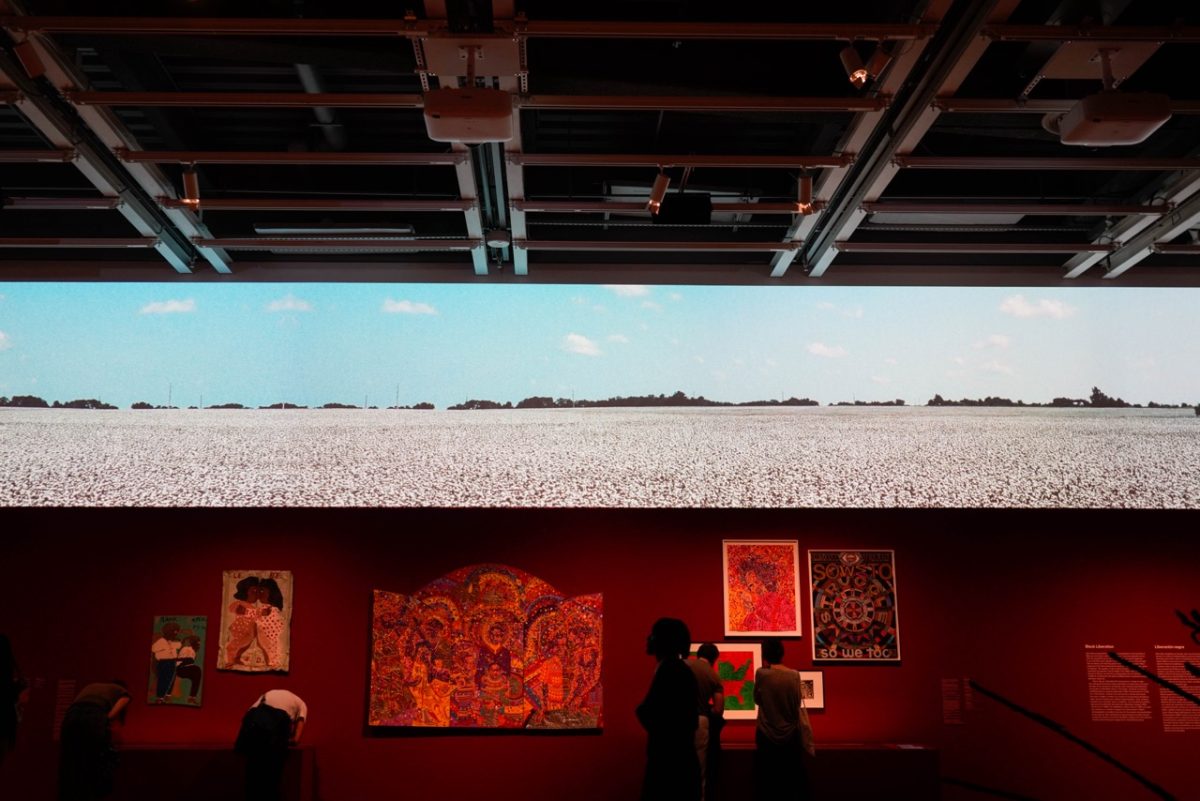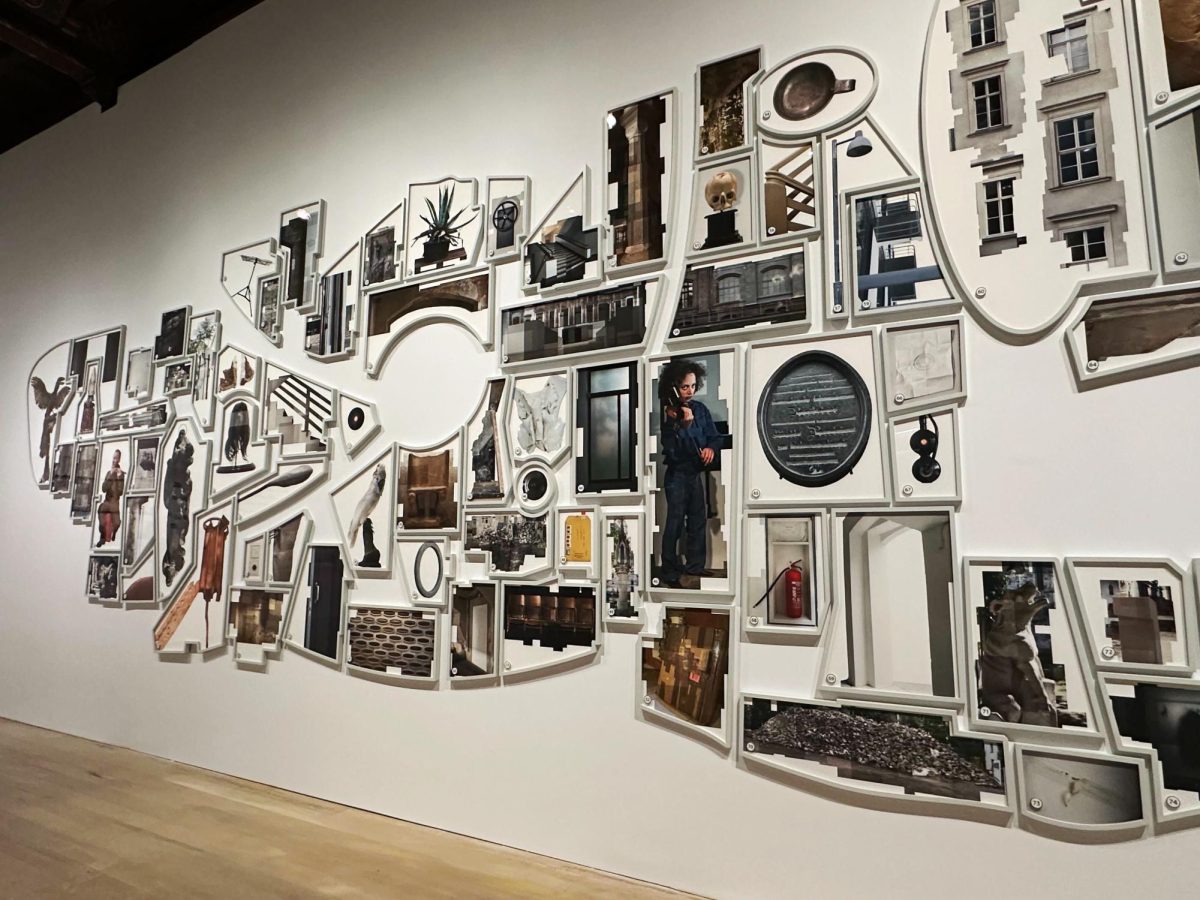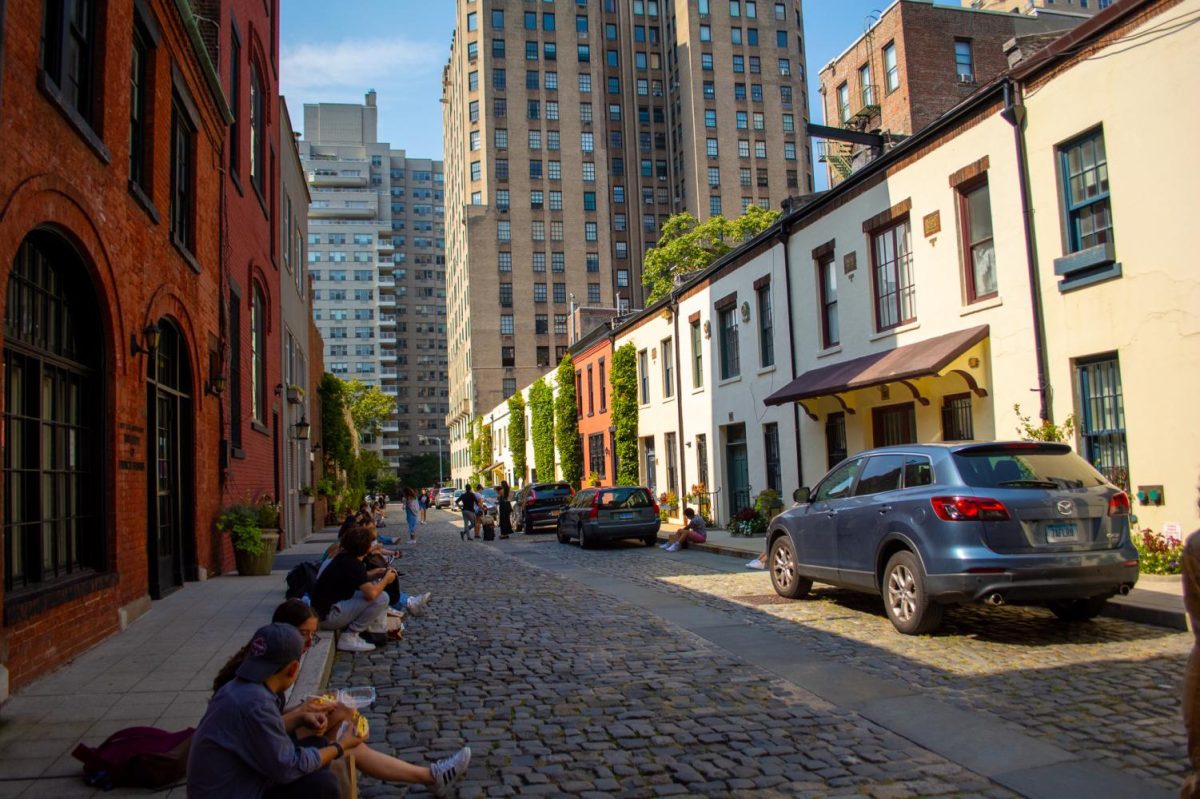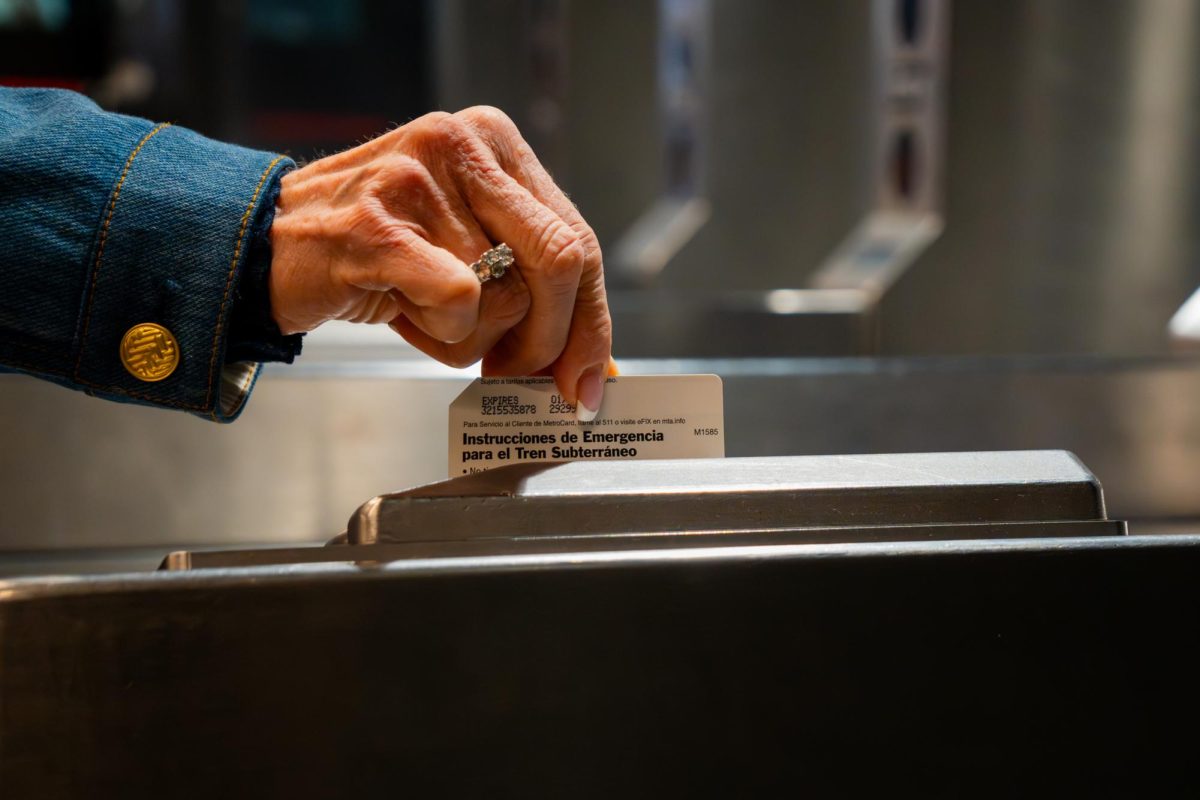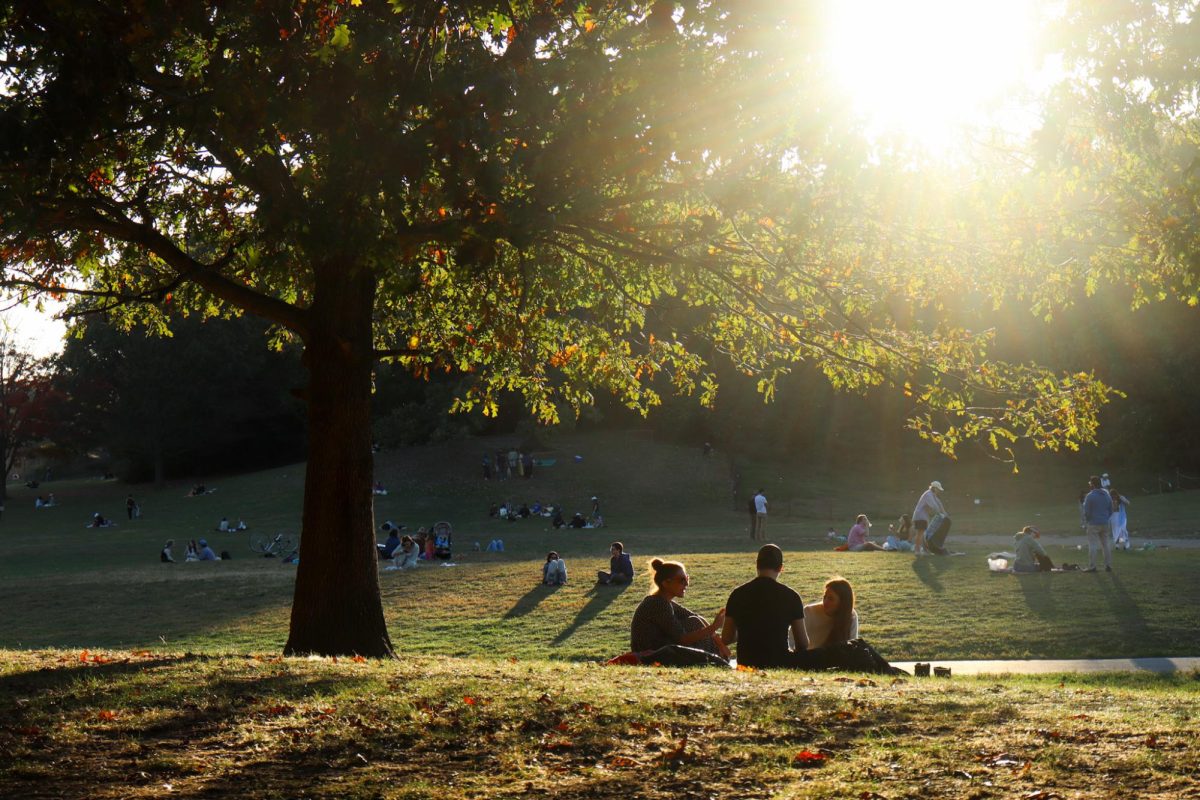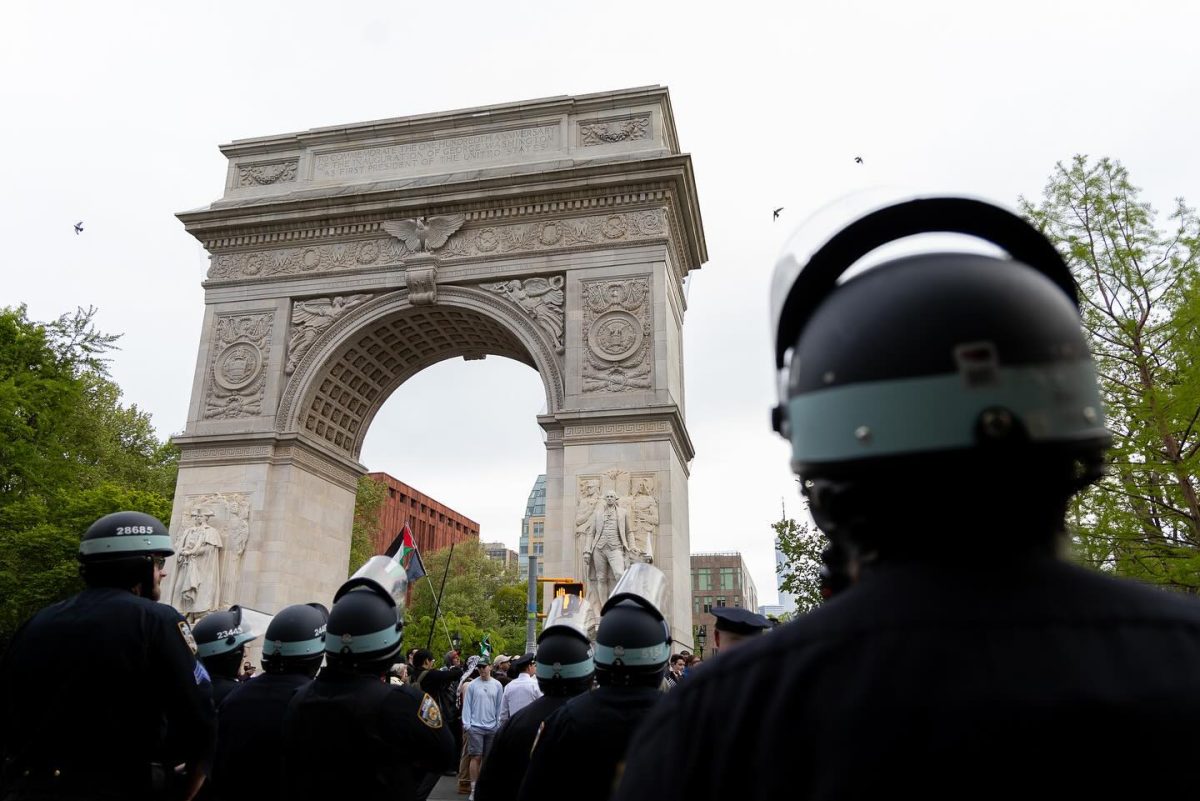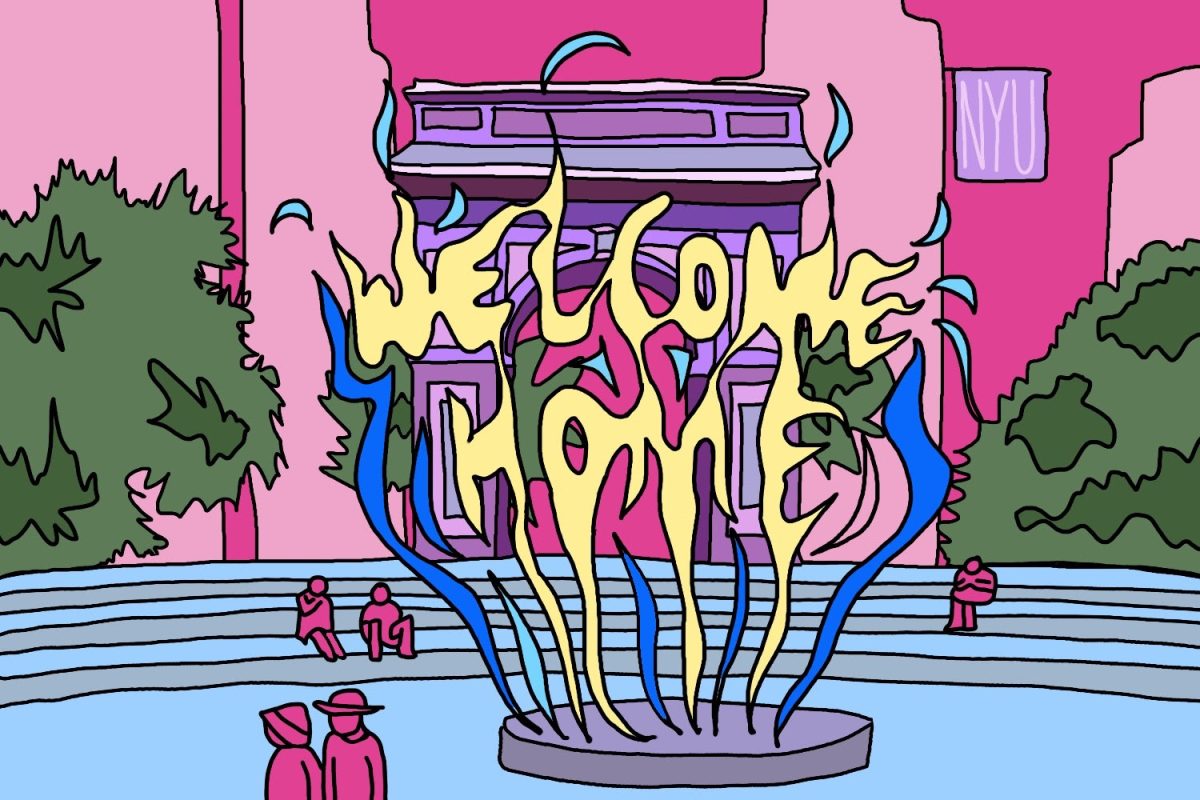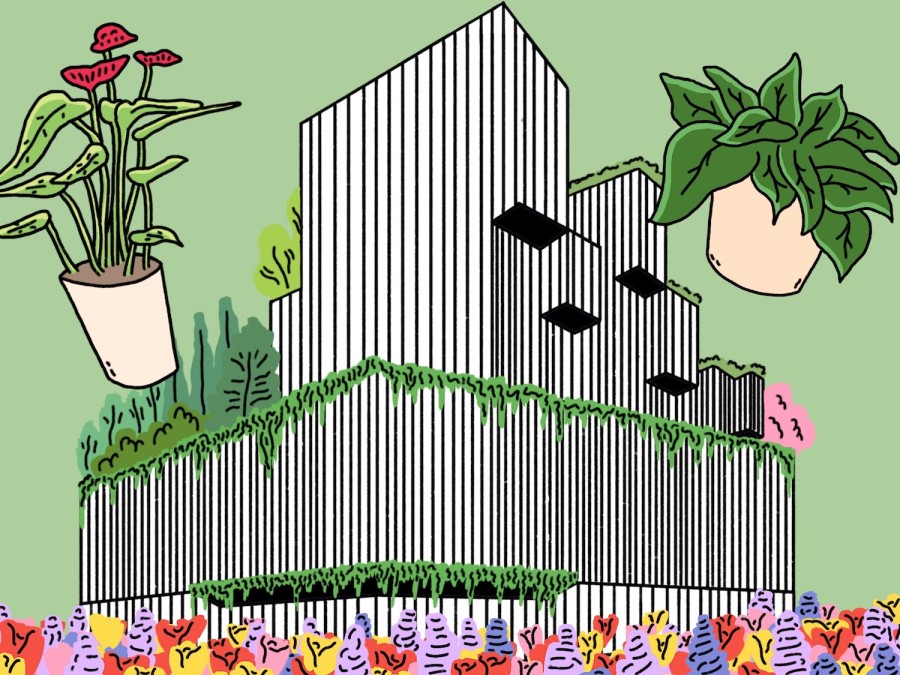Sad in the Paulson Center? There’s a solution.
NYU’s sustainability initiatives should extend beyond reducing our carbon footprint. We should have a visually lush and verdant campus.
(Illustration by Max Van Hosen)
May 4, 2023
As you enter the revolving doors of the new, billion-dollar Paulson Center, New York City’s vibrant energy seems to fade away, revealing the new building’s ineffectual space. The Paulson Center has floor-to-ceiling glass windows and hallways as long as city blocks, but the only visual installments — some net-like wall decorations on the second floor — are a poor attempt at bringing color into a vast, gray expanse. On top of this, just like most other NYU buildings, it has no life — no plants or greenery to spruce up the space.
Introducing plants into its buildings would allow NYU to bridge the gap between its desolate-looking buildings and its efforts to make our campus greener. Considering how much NYU pushes its sustainability initiatives, it should be many students’ dream-school-turned-green-school. But that’s hard to achieve if our supposedly eco-friendly buildings are devoid of plants.
Based on NYU’s current timeline, it will be 17 years before we see complete carbon neutrality at our institution. But an internal aesthetic approach is an easy way to start.
Incorporating greenery could make NYU feel more like home for students who grew up surrounded by nature. As a student hailing from the Hawaiian islands, where nature’s bounty thrives, I understand that not everyone living in New York City shares my love of plants — like my preferred low-maintenance pothos and anthuriums. But, I can attest that the joy I receive from the simple act of picking flowers in my front yard and walking around my garden is unmatched. By adding more plants to students’ lives, NYU could not only enhance the aesthetic value of its architecture, but also improve its air quality — and students’ mental health.
New York City is famous for its vast foliage in parks, avenues and other green spaces. However, in recent years, the city has made an attempt to introduce vegetation between buildings and streets. Although NYU does house a rooftop garden, floral plazas and other landscaping projects, it should follow the city’s model in bringing greenery everywhere, not just in spaces dedicated solely to that purpose.
As NYU students, we all share the joy of sitting in the park and enjoying nature nearly all year round. Now just imagine if we could also enjoy the sight of tulips or sweet, blooming hyacinths on the way to Crave NYU or Cafe 181.
Integrating indoor plants into the Paulson Center, or any other buildings, would not require a large investment from the university, nor would it disrupt the building’s current design. Union Square Farmers Market and the New York City Flower District sell plenty of low-maintenance and cost-effective plants that would thrive inside Paulson — especially thanks to its enormous windows — and enhance the building’s atmosphere. Their upkeep could also provide employment for gardening staff. Incorporating nature into the built environment could be a simple yet effective way to promote sustainability and encourage students to start nourishing their own green thumbs.
NYU has been criticized in the past for using the Paulson Center for greenwashing, and adding plants to buildings may seem like another example of that. However, adding greenery shouldn’t be used as a replacement for actually making climate-conscious decisions. In fact, it could just be a representation of actual efforts being made.
NYU has already been seeking and implementing greener approaches, such as creating more plant-focused menus at dining halls and putting out composting bins. While environmentally beneficial, these efforts won’t immediately show tangible results for another 17 years. More plants, on the other hand, would immediately improve the visible qualities of our buildings while we wait for the other initiatives to come to fruition.
Adding indoor plants into the Paulson Center, or any NYU building for that matter, would be a small but necessary step for NYU to improve the appearance and environmental quality of its infrastructure. While current NYU students will have graduated by the time the school makes its carbon neutral goal, it wouldn’t hurt if, in the meantime, the university turned our city campus into a veritable urban jungle.
WSN’s Opinion section strives to publish ideas worth discussing. The views presented in the Opinion section are solely the views of the writer.
Contact Derek Kamakanaaloha Soong at [email protected].

